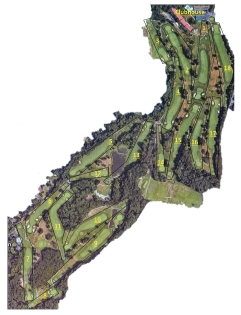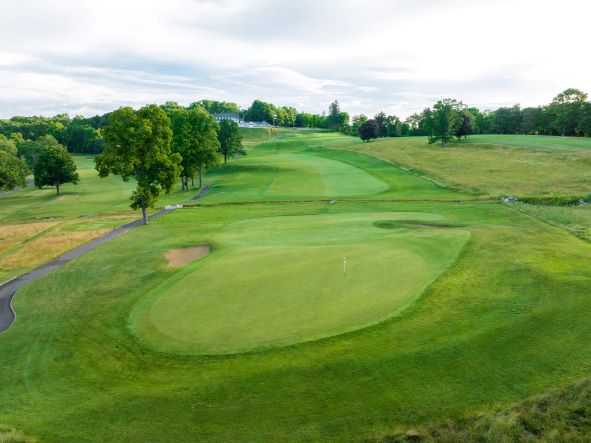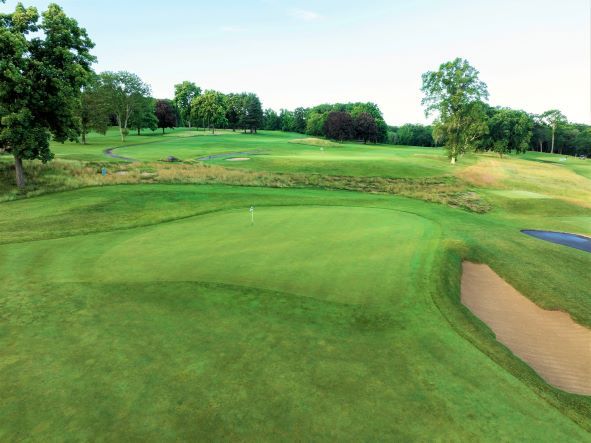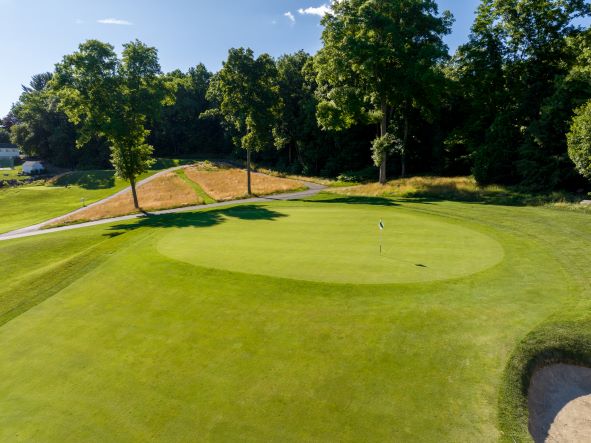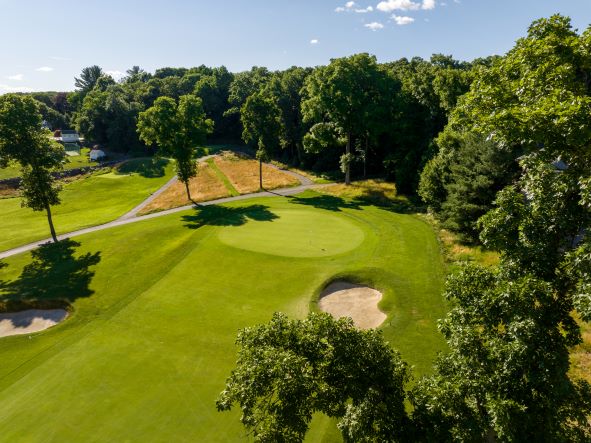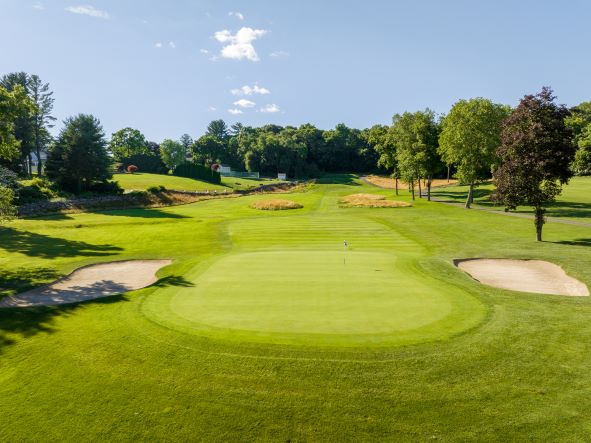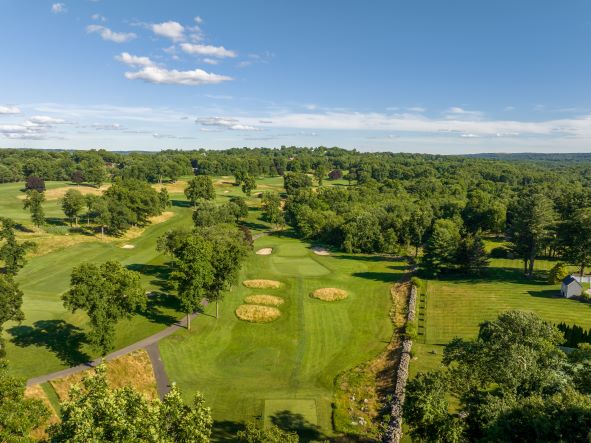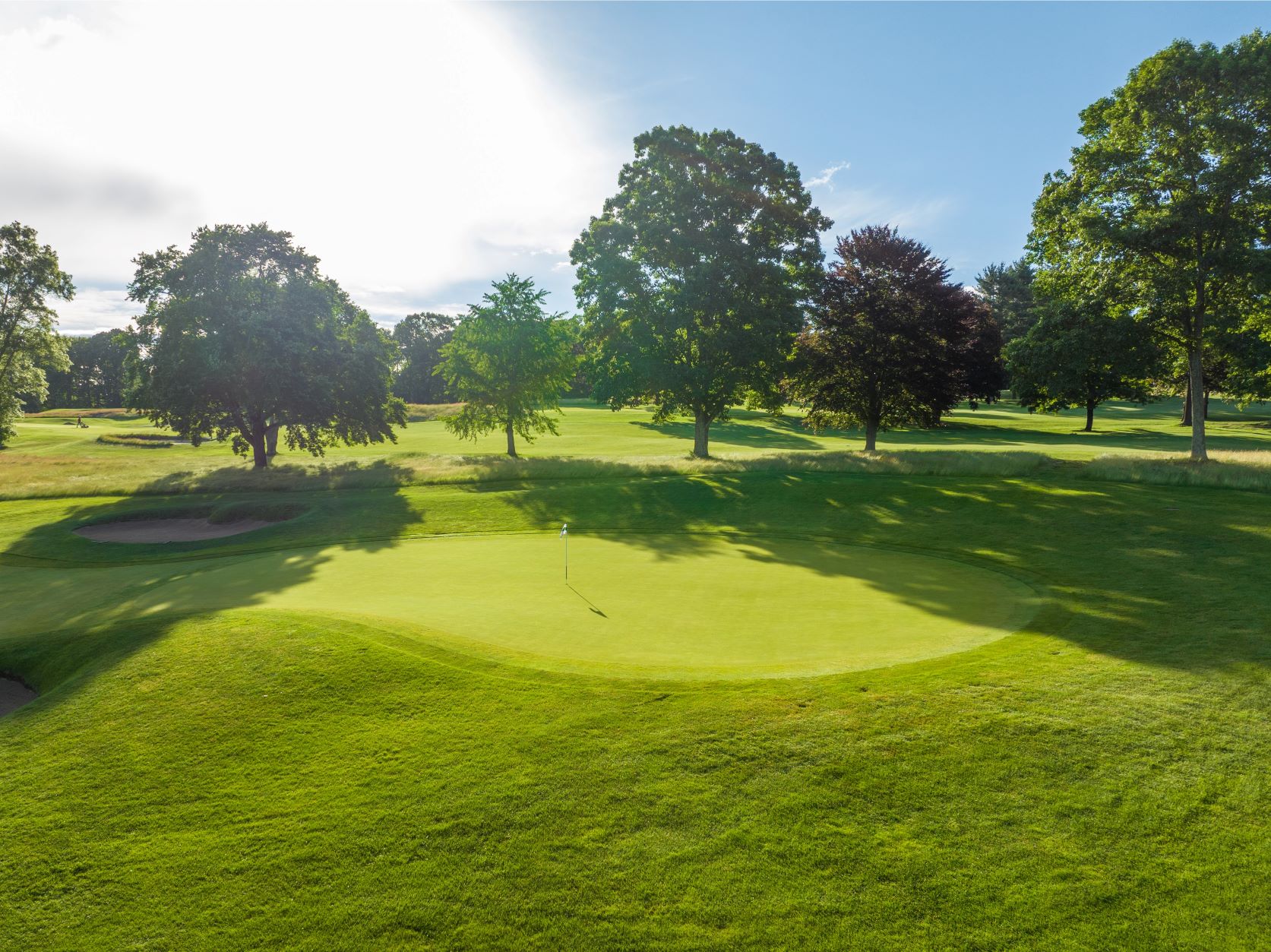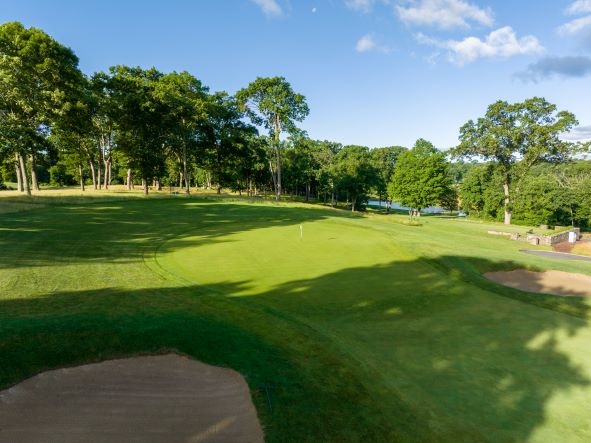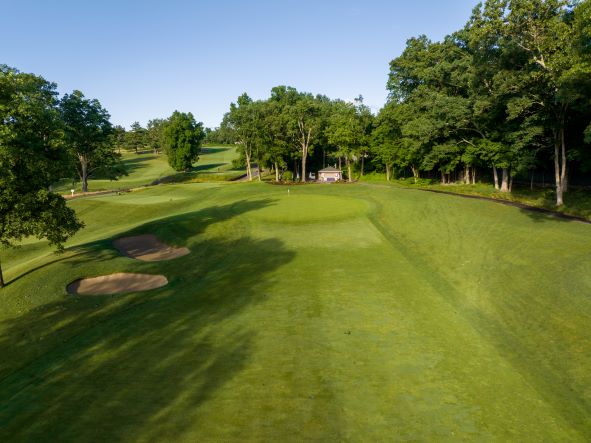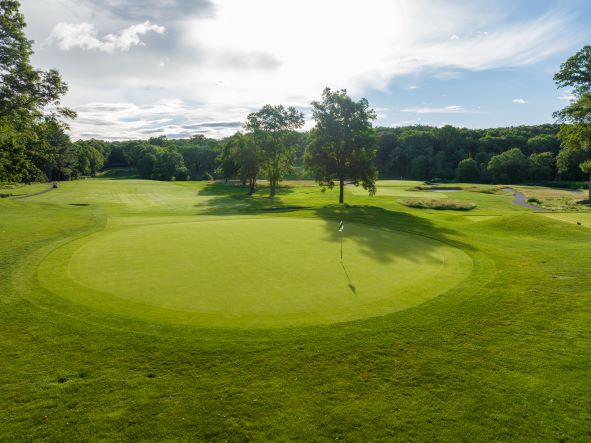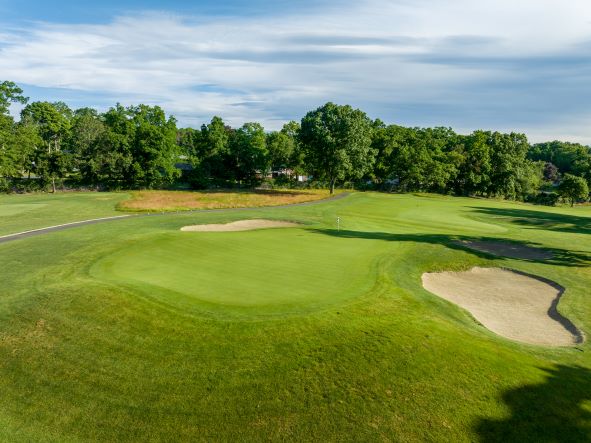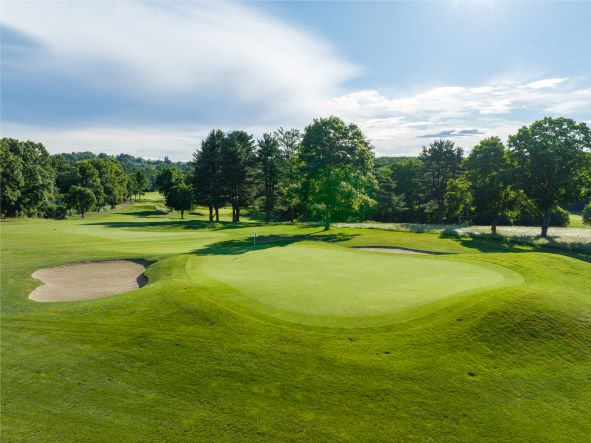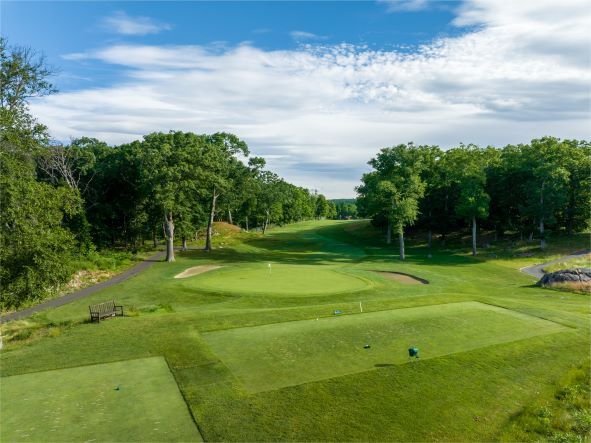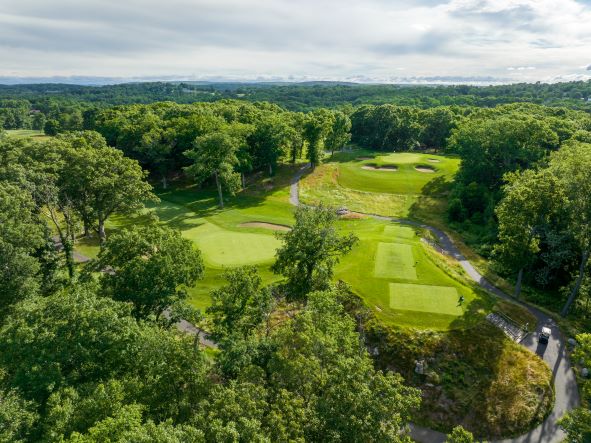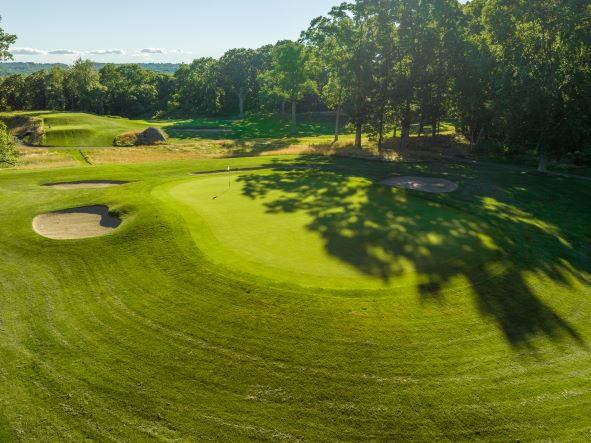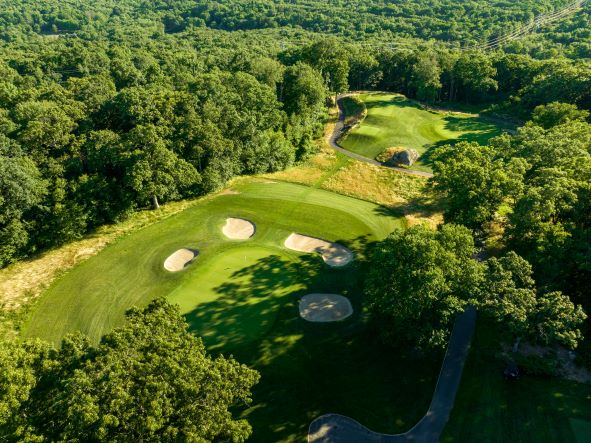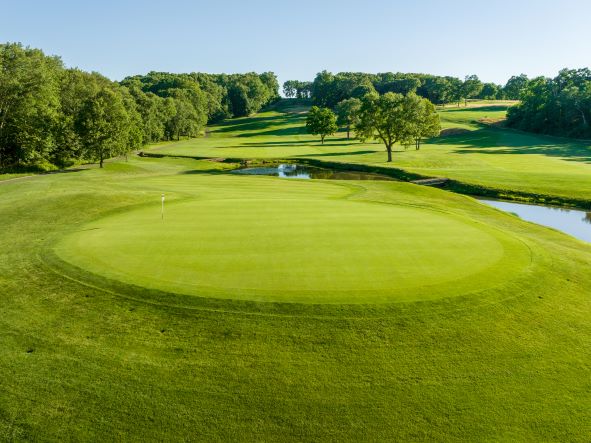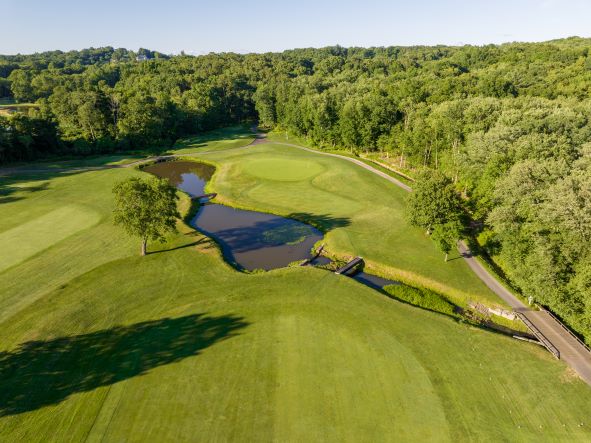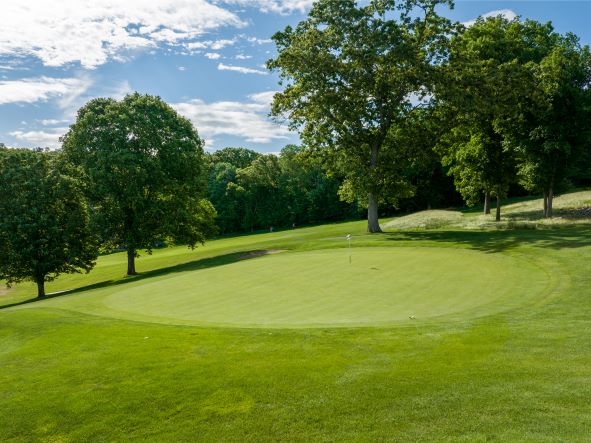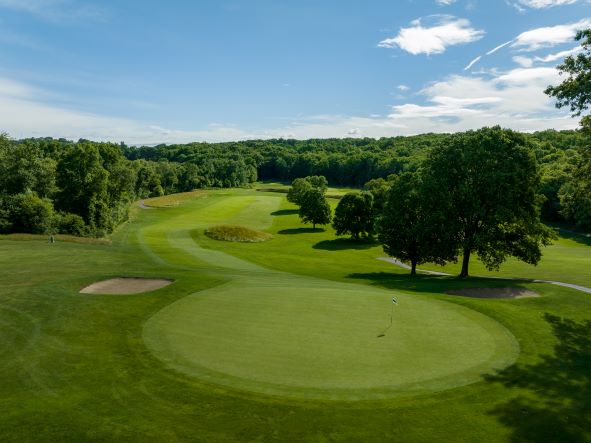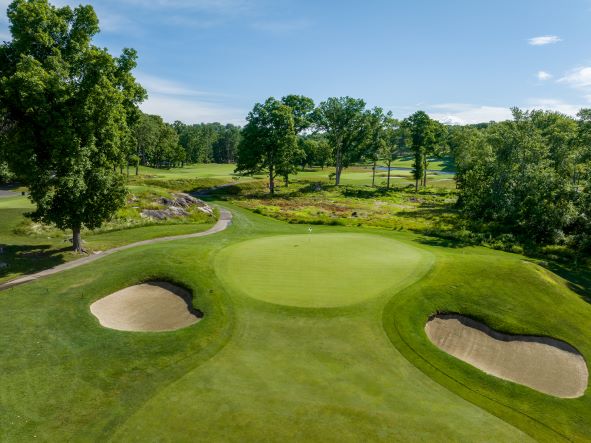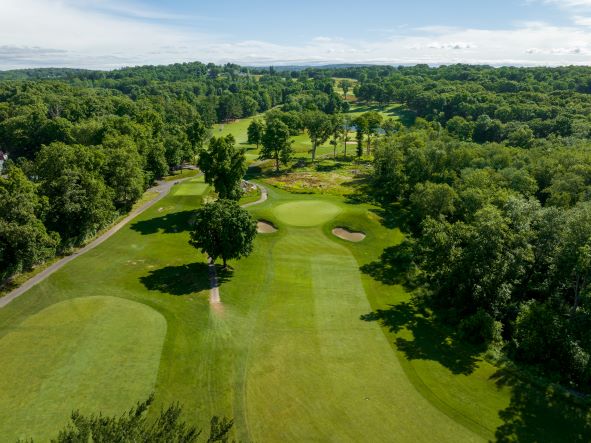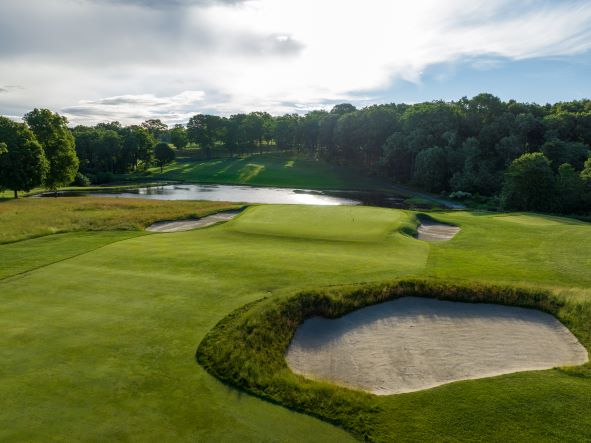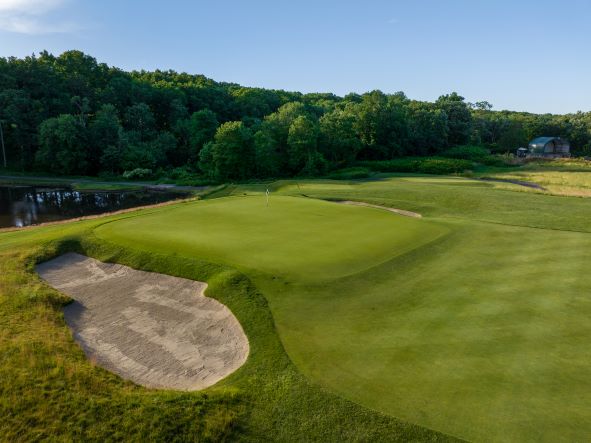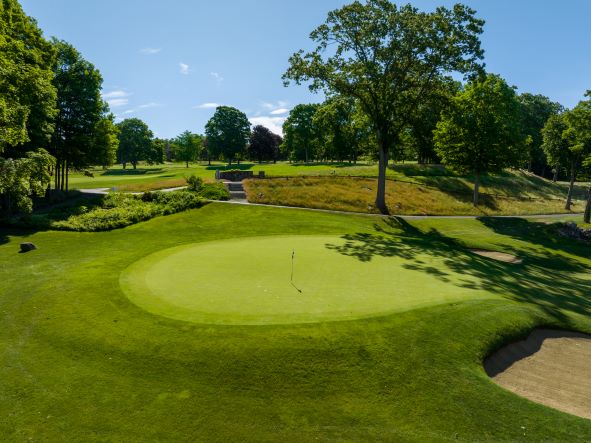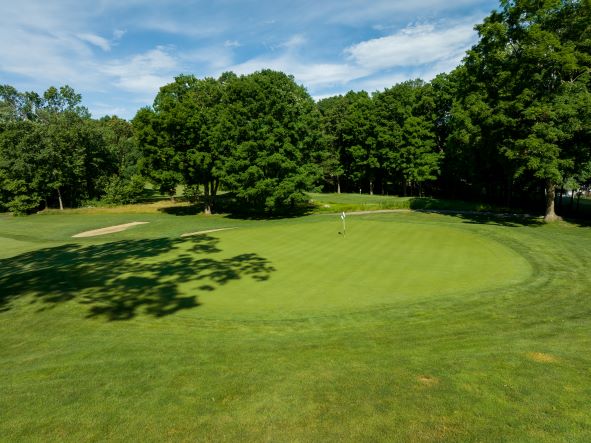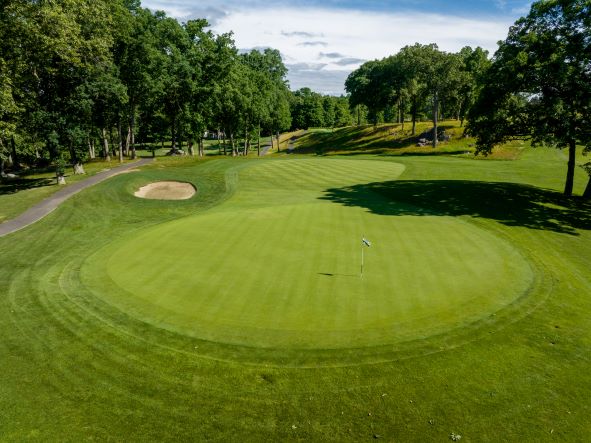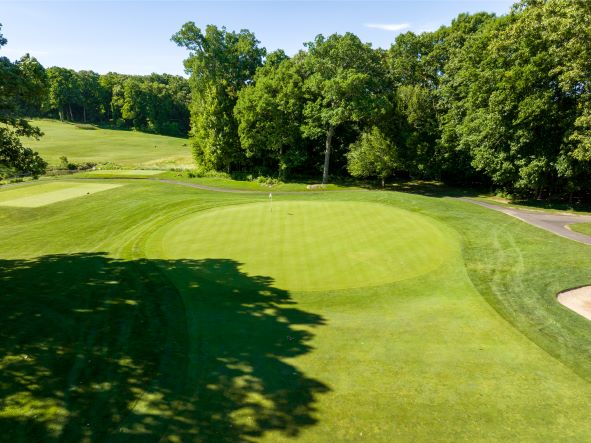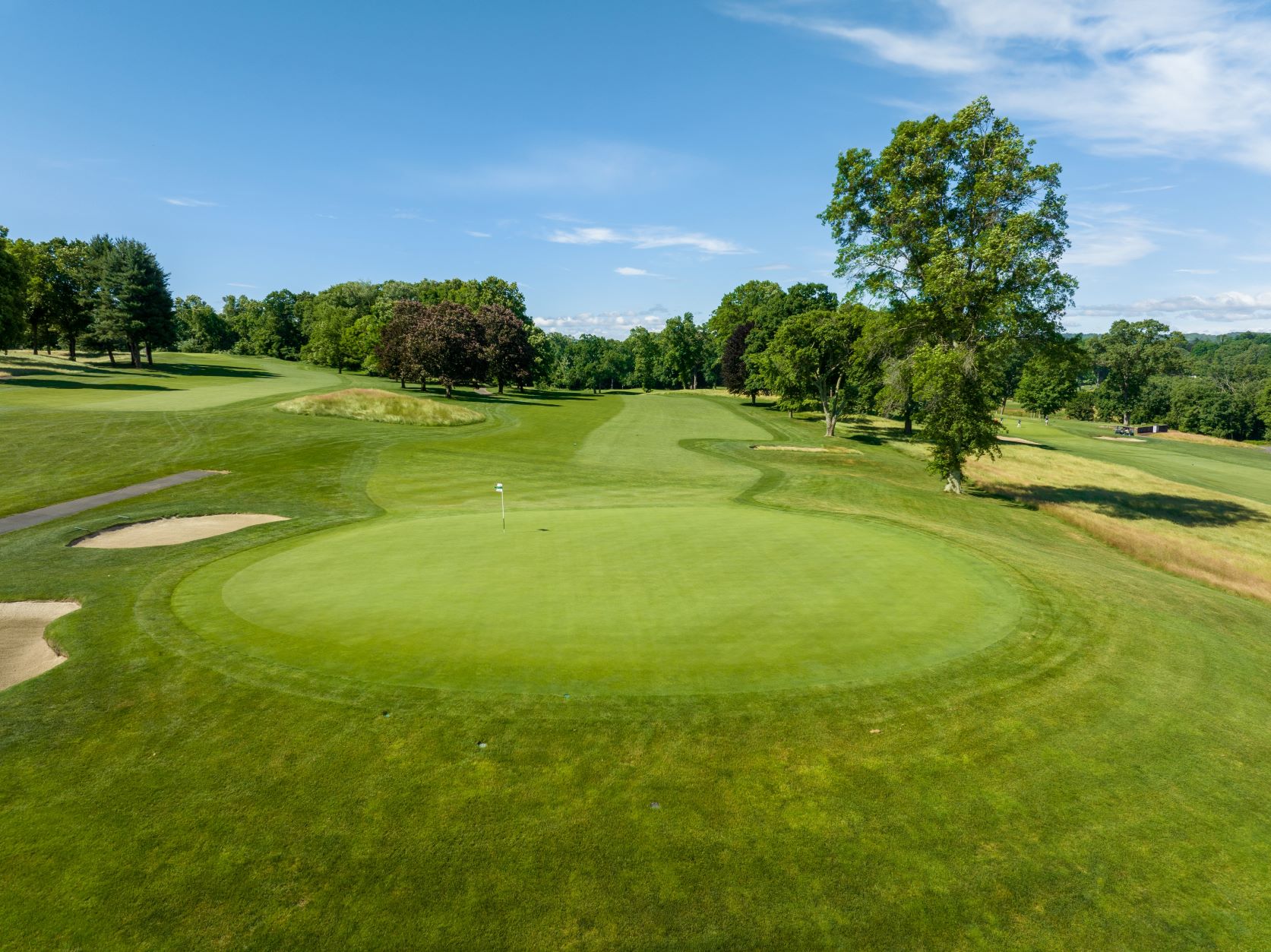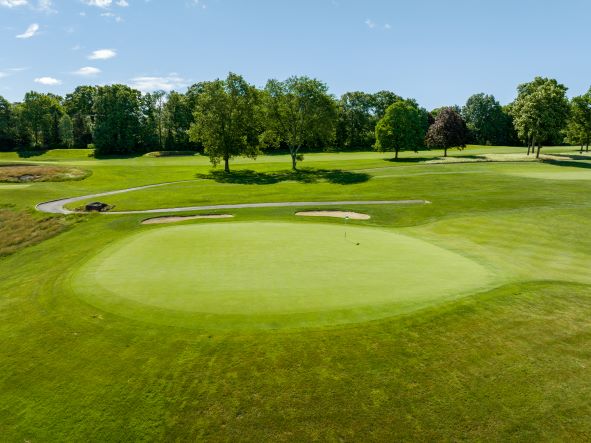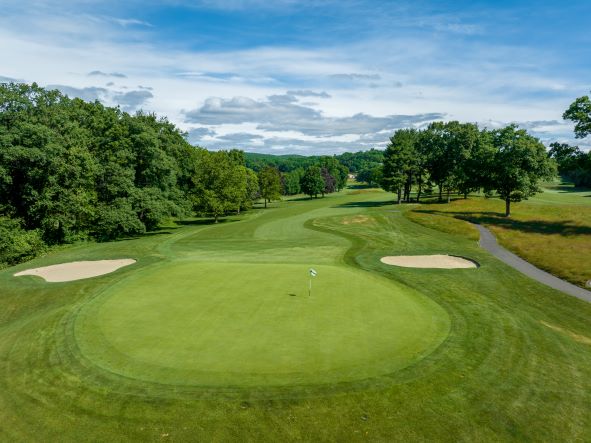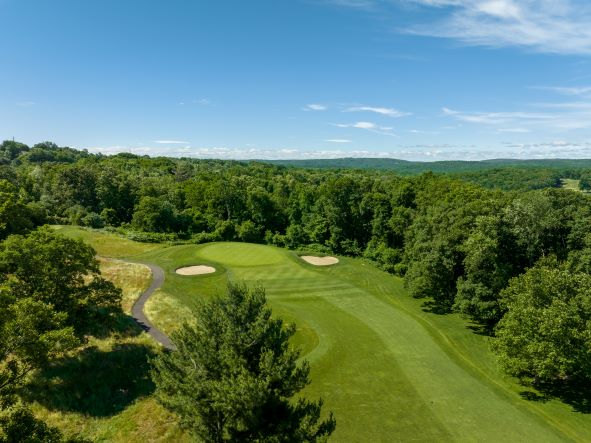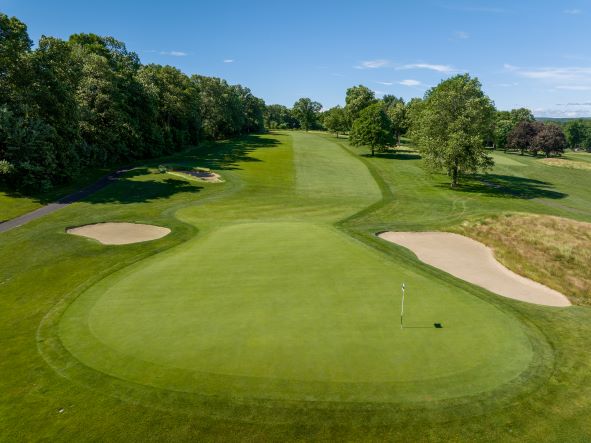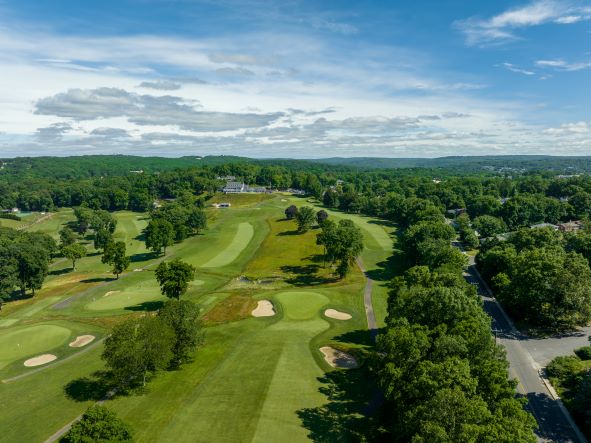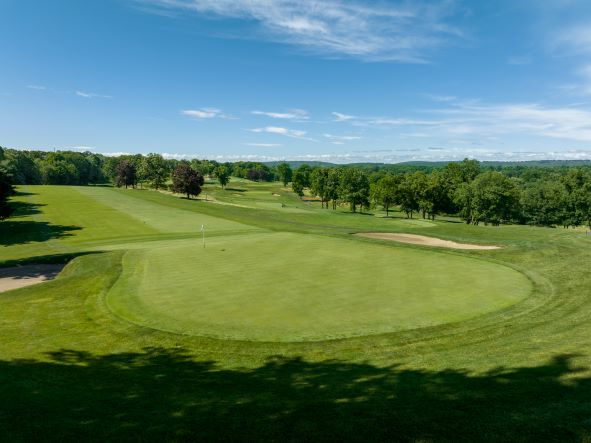With its elevated tee and panoramic views, the 1st hole serves as a thrilling introduction to the course. A drive that strays left might bounce off the hill towards the fairway or could find the native fescues. A shot to the right off the tee finds nothing but trouble in the trees that separate the 1st and 2nd holes.
A long downhill Par 3 with a narrow green provides a challenge with bunkers biting in from each side. The preferred method of playing the hole, even for low handicappers, is to hit short of the green in the approach in hopes of pitching or putting it close.
Although the hole looks relatively flat from the tee, the 5th hole plays slightly uphill. The long straight away Par 4 requires a precise shot off the tee. A hybrid or long iron is usually the club of choice for the second shot to a green with little undulation.
To the eye, the 7th is the toughest driving hole on the course. A left to right tee shot is required, but a drive that is struck too well could put you in the rough between the upper and lower fairway. A long second shot to a green guarded with bunkers on either side proves that this Par 4 has seen more bogies than pars.
With #9 being the only Par 5 on the course, this is the perfect opportunity to make up a shot lost earlier in the round. This hole represents the "risk/reward" of a short par 5. A well placed drive invites the question: Do I go for the green in two or lay up short of the water?
Following the short Par 5, 9th hole, Ross presents a demanding 10th that is set up on the tee shot. The fairway narrows as it gets to the green and a shot that lands in the rough will be difficult to get to a green that is situated some 50 ft uphill. The punchbowl green receives most shots well, but a ball that rolls through the green into the rough will be tough to stop coming back to the pin.
The 11th hole is a short dogleg right. A low handicap player will usually hit 3 or 5 wood off the tee. The second shot presents a bit of a challenge as the fairway slopes away from you to a downhill green. Keep your head down on your second shot and your likely to come away with par.
The 13th is the only tee shot over water which can wreak havoc mentally on the high handicapper. Once over the water, the placement of the tee shot is key. Too far right and you will have a long approach to the green that could be blocked by a large specimen oak tree. Too far left and you will cross the lateral hazard that runs up the left side. The green has a uphill approach and false front that leaves players throwing their arms up in disgust as their ball rolls 40 yards away from the green.
The number 2 handicap hole has a blind tee shot to an uphill green. A slight fade off the tee will put you in the trees on the right and it will be tough to make par from there. The mid to long iron second shot to a green that has a steep drop off on the left and two bunkers on the right will test your iron play.
A short Par 4 that slightly bends to the left, the 16th is a hole that you just want to get your Par and get out. The somewhat blind uphill shot to a green with a severe drop-off in the back leads golfers to club down in order to keep the ball from going over the green. These shots end up in the approach which requires a good short game to get up and down for Par.
Another blind tee shot, the 17th is a slight downhill Par 4. A tee shot that lands on the right center of the fairway is your best chance for Par here. The green also has a severe drop-off in the back, but unlike #16, this entire green is right in front of you. The large greenside bunker on the left swallows up many balls, but par is a must with the tough 18th to follow.
The 18th hole is one of the best finishing holes in the state of Connecticut. It is crucial that your tee shot hit the fairway here to have any chance at par. The long second shot to an uphill green requires stamina and accuracy on what is likely your last full swing of the day. The two tier green with false front is also flanked by two bunkers.



